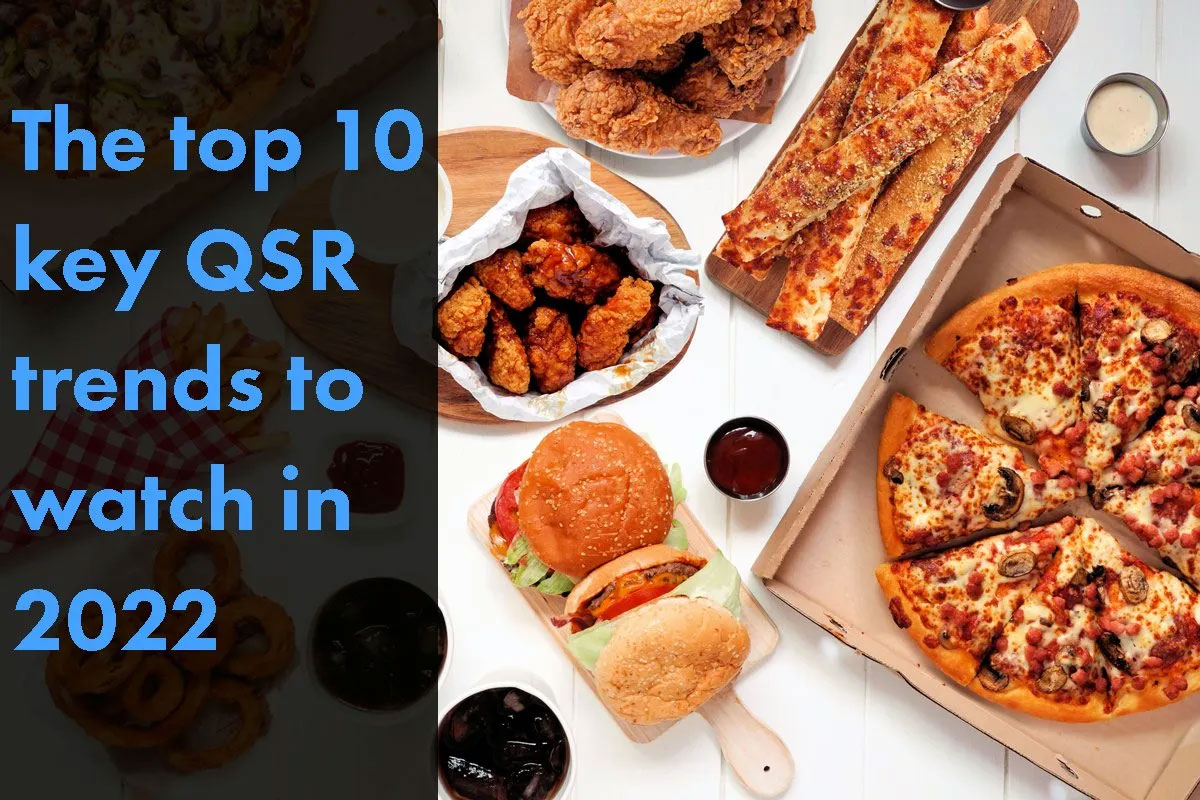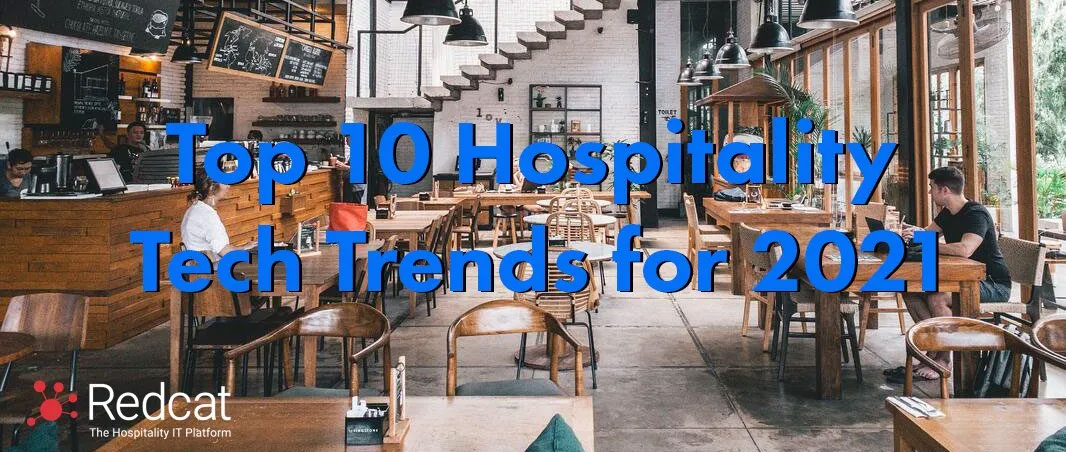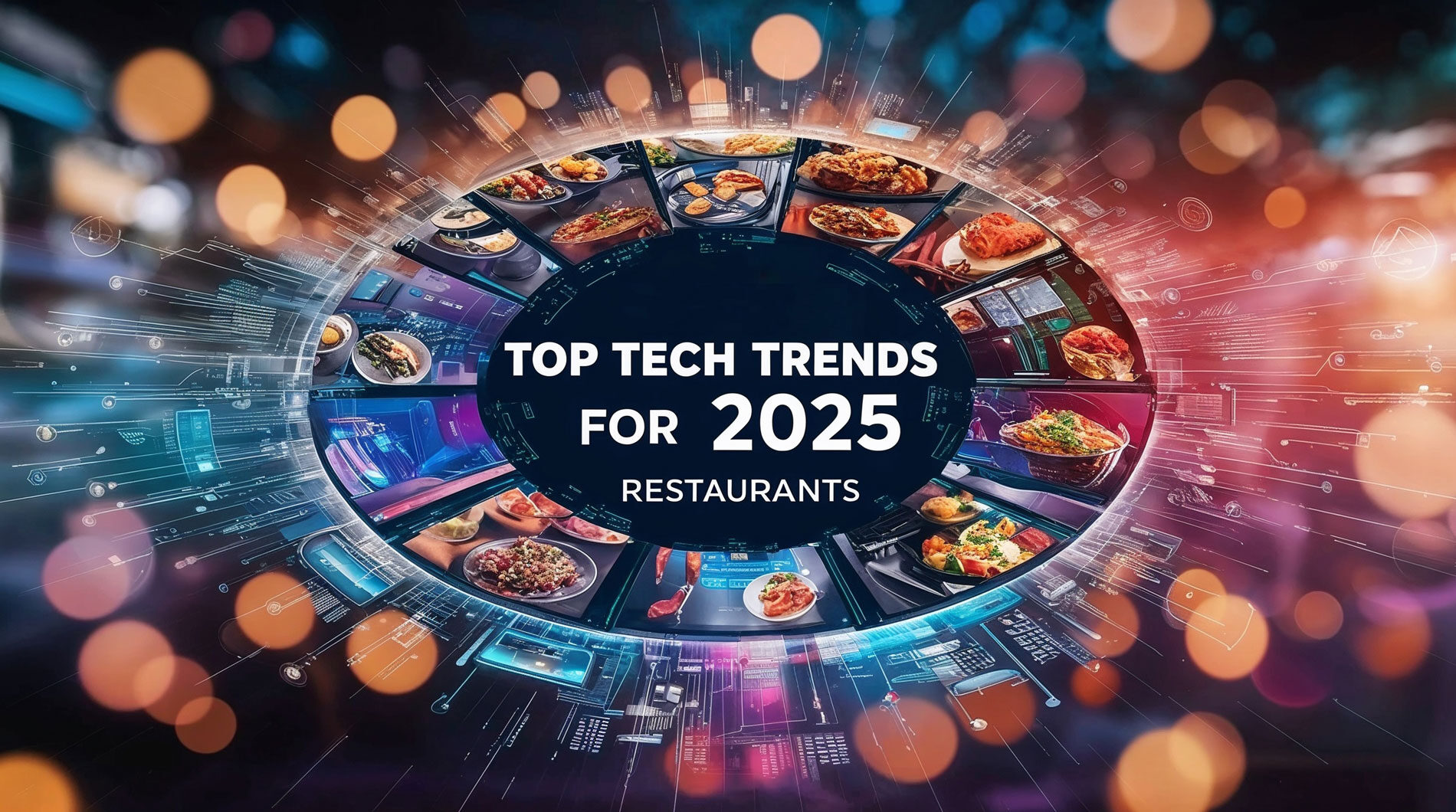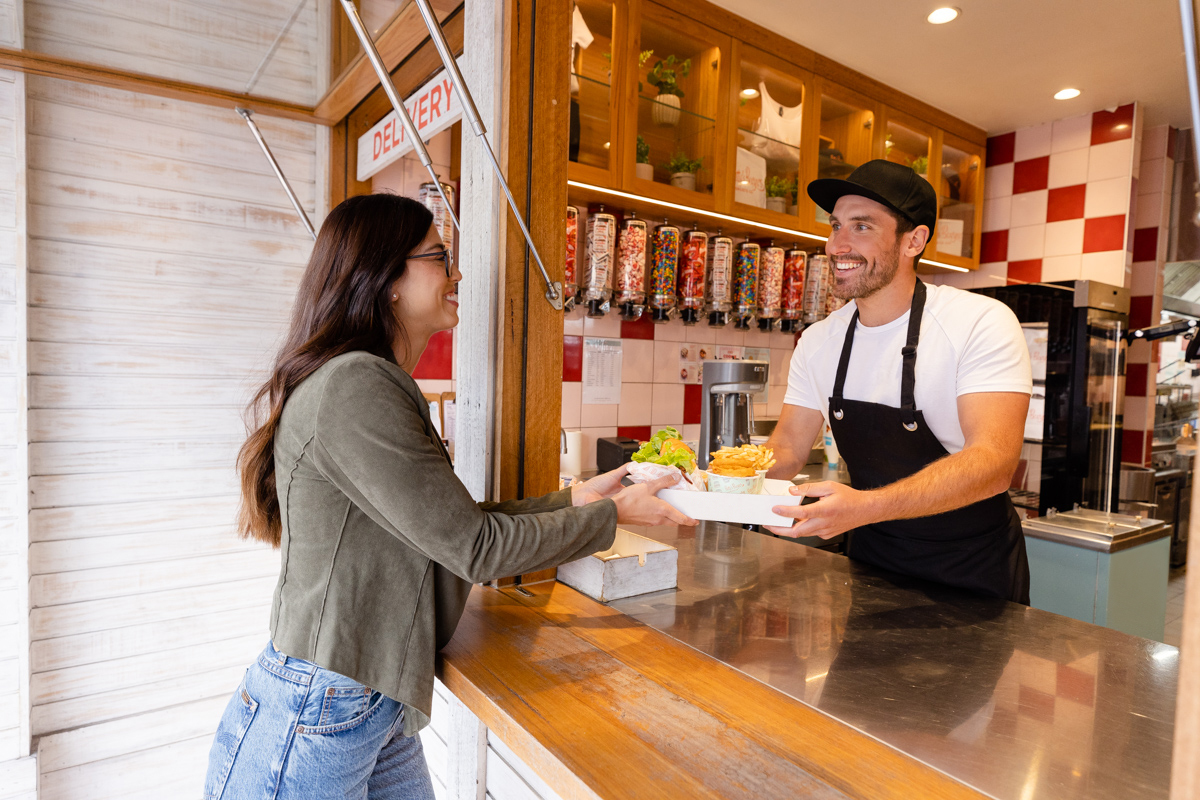As the world and its restaurants are re-opening, the QSR industry can turn its back on the rollercoaster that was the last 18 months and look forward to exciting times ahead.
QSR never stands still. The sector is seeing pandemic-driven acceleration of change, new customer habits and an ever-greater use of technology. So, as we move into a new year, what are the top trends to look out for in 2022 in the world of QSR?
Here’s our take on the top ten QSR trends to watch:
- Driverless delivery
Pizza lovers in Houston are already getting their deliveries from an ‘ autonomous, no-occupant, on-road delivery vehicle’ as Dominos tests a partnership with Nuro’s R2. With takeaway delivery by robot already a reality, it is set to increase significantly in 2022 and beyond.
- Search, maps, and payment integrated with online ordering
The growth of online ordering was well underway before 2020 but has accelerated with the pandemic. For many hungry consumers, the starting point to finding their meal is Google. As Google integrates search, maps and payment with restaurant menus, the trend of consumers finding a nearby restaurant, ordering, and paying, all through Google, is one for QSR operators to watch.
- White label delivery
Delivery is a trend that is clearly here to stay. The new angle, however, is the growth of white label delivery. Until recently, the choice for QSR operators was to use in-house delivery staff or go with an aggregator like Uber Eats, DoorDash, Deliveroo or Menulog. But both have their downsides: In-house delivery has complex logistics, and aggregators are expensive, and ‘own’ the customer details.
But with white label, third party drivers (such as DoorDash Drive and Uber Direct), deliver native orders. It’s a ‘best of both worlds’ that leaves delivery to the logistics experts, has a fixed cost, and give QSRs visibility of their customers for marketing and loyalty, making it an attractive option in 2022.
- Delivery straight to POS
Traditionally, Delivery orders came into the QSR via a dedicated tablet and were then re-keyed into the point of sale (POS) for transmission into the kitchen management system (KMS). A growing trend is for QSRs to use a POS that allows direct integration of online orders. This saves time, eliminates re-keying errors and takes away the need for reconciliation between systems. Staff can focus on customers who are in the store, and orders are fulfilled faster.
- Contactless ordering
After 18 months of lockdown, many diners are keen to get back into the restaurant. But they’re still understandably nervous about contact - which is driving rapid growth of contactless ordering in store. It could be from their own phone, from a tablet on the table, or at a kiosk. It’s a trend that helps QSRs (typically labour-intensive businesses) to streamline and be able to run with fewer front of house staff. It also enables a consistent approach to upselling, meaning that online orders are typically larger, on average, than orders placed with staff. And of course, it helps to make customers feel safer about coming into your venue.
- Digital insights
The increased digitisation of ordering gives QSRs greater opportunity for digital insights about their customers. Through their digital behaviour, the QSR can get to understand each individual customer - their meal preferences, how they navigate the menu, their price points, their favourite locations. They can use this information to create very specific incentives and offers, to present customers with their favourite menu items first, and show them new dishes that are likely to appeal to them. Research shows that in the QSR space, loyalty is very much driven by offers - and with digital insights, these offers can be 100% tailored to each customer.
- Dark kitchens/Virtual brands
Dark kitchens and virtual brands - that is, brands and restaurants that have no public shop-front presence, just a kitchen and delivery operation - rapidly accelerated in 2020/2021 and are still very much a growing trend for 2022. Dark kitchens allow cost efficiencies by having one kitchen to several brands and menus. They allow QSRs to launch new brands faster, to test the market without expensive high-street property costs, and move into new areas with a low price of entry.
- Restaurant layout
Not all the trends are tech-based. The increase in off-premise dining appears to be a permanent change, and one that will lead to a change in the design and layout of QSR premises. Forbes Magazine reports that the current 70/30 front-of-house/back-of-house split could be completely reversed as soon as 2025, along with an increase in dedicated areas for pickup drivers.
- Healthier menus
‘Fast-food’ is no longer synonymous with ‘unhealthy’. As QSR magazine reports, the pandemic saw an increase in the existing shift towards healthy eating and local produce. Customers are demanding those options from QSRs, who are responding with wider menu choices, more salads and fruit, less salt and sugar. It’s a healthy trend that’s set to continue in 2022.
- New approaches to catering
For QSRs that offer catering, there’s change ahead too. As Forbes reports, as workers return to offices, on-premise catering is building up again, but in a different format, with more demand for individually packaged meals, rather than shared platters. Smart QSRs are looking at their packaging options for 2022.
QSR is one of the fastest moving sectors within hospitality - they have demanding, tech savvy customers, who are driving change at a rapid pace. It’s a sector full of exciting developments, and we’ve pinpointed the ones we believe are the trends to watch. One thing is certain in the world of QSR - change, like the food, is delivered fast.



